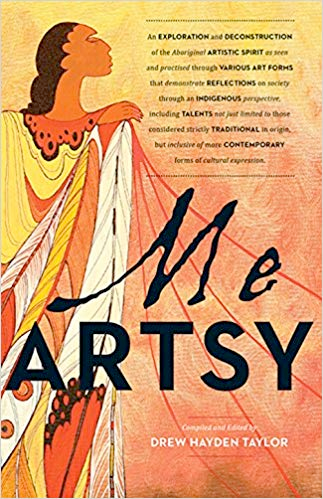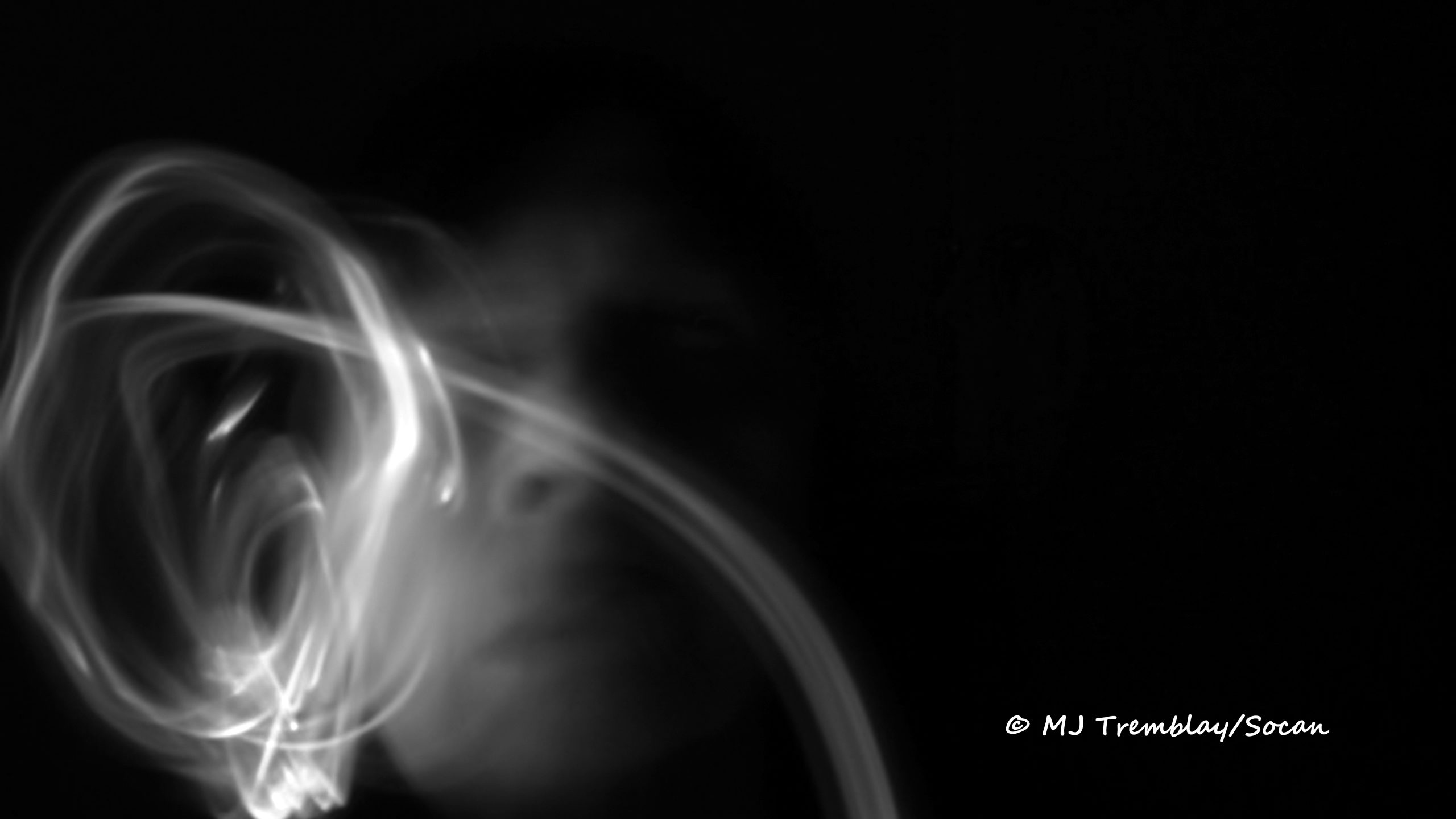Me Artsy, compiled and edited by Drew Hayden Taylor
Douglas & McIntyre, 2015 (256 pages)
The best way to enter into the spirit of this luminous collection of essays is to quote what Drew Hayden Taylor, its compiler and editor, has to say about its intent:
“An EXPLORATION and DECONSTRUCTION of the Aboriginal ARTISTIC SPIRIT as seen and practiced through VARIOUS ART FORMS that demonstrate REFLECTIONS on society through an INDIGENOUS perspective, including TALENTS not just limited to those considered strictly TRADITIONAL in origin, but inclusive of more CONTEMPORARY forms of cultural expression.
What more is there to say? Plenty. Let’s start with Zacharias Kunuk, producer & director. You might remember him as the auteur of Atanarjuat, a film rendition of the true story of a naked man who ran over a frozen landscape … all the way to Cannes, where it won an award that made Canadians first take notice of their homegrown indigenous talent. (See Atanarjuat. The Fast Runner, reviewed by Maya Khankhoje, article 6A …)
Monique Mojica is an actor and playwright who faces the challenge of being “an Indigenous woman artist in a land where there are an irreconcilable 1,200 missing and murdered Indigenous women and girls.” Her theatre work has allowed her to channel rage and sorrow into something uplifting for herself and her community. Indigenous cultures recognize the need for performance and repetition in the form of planting, making a fire, paddling canoes, gathering at sacred sites ‘to re-enact creation stories, emergence, migrations and our own interconnectedness to land and place in relation to the cosmos.” Monique was inspired by the words of Louis Riel, the Métis spiritual leader of the Resistance movement: “My people will sleep for one hundred years, but when they wake, it will be the artists who give them their spirit back.” Picasso’s Guernica also inspired her as a child. Her artistic practice involves decolonizing her perceptions and belief system and avoiding romanticizing folklore or sensationalizing victimhood. For Monique, the word “art” is not a noun, it is a verb: “I art to make our knowledge speak.”
Marianne Nicolson, an installation artist and a graduate of Emily Carr University of Art and Design in Vancouver uses her art to tell Canada that her people reject the government’s notion that they are squatters in their own territory. Informed by rock paintings dating back to the nineteen-twenties, Marianne Nicolson decided to paint a mural on a cliff face. She describes the dangerous process involved and hopes that her art is remembered, not as a personal creation, but rather as “a testament to what can be achieved in reclaiming our place within the lands we inhabit.”
Maxine Noel is a visual artist whose day-job titles have included legal secretary, ski-patroller, Native Friendship Centre administrator, and many more, but whose core identity was fuelled by art. “…painting is how I speak, like a poet with a pen and paper, the actor or the dancer with a stage and the light.”
Kim Picard became an accomplished seamstress thanks to her late Kukum (grandmother) who taught her how to sew at a young age. Later her experience as a theatre student making costumes and working for Native Innovation Design led her to a career in fashion design. She decided to revive traditional garments by giving them a contemporary form. Her inspiration arrives to her in dreams and healing ceremonies.
Murray Porter is a bluesman and he will tell you that blues have become popular with his people because blues is all about storytelling. He also connected with Australian Aborigines whose stories might be different, but whose reverence for Mother Earth is the same.
Karyn Recollet, unlike many of the artists in this anthology, is a cultural theorist, not a practitioner. In her doctoral dissertation based on interviews of different hip hop artists on Turtle Island, Karyn explains that “the electric powwow can be interpreted as an Indigenous hub space as Indigenous peoples congregate in an ‘underground’ remixing of Indigeneity, affirming tribal and embodied sovereignties on the dance floor.” Quite a mouthful!
Choreographer, dancer and producer Santee Smith brings us down to earth. Like other Indigenous artists, she derives her inspiration from dreams and visions and firmly believes that dance makes us grounded. “Transform your life… let dance into your life. Join the celebration and ceremony of life; join the dance.”
Rose Stella, actor, singer and artistic director, applauds the fact that theatre students are no longer content to be cast as the “drunken Indian.” She helps them in the process of becoming the “Indian” that they want to be.
Playwright & writer Drew Hayden Taylor, like most Native people, has lots to tell, but he avoids “dark, depressing, bleak, sad and angry” stories. He attributes this state of affairs from long years of repression. “Being a storyteller is like being God, but in a non-sacrilegious manner. It’s the ability to create universes and people…”
Drumming is another type of performance for change. Steve Teekens makes his own drums and belongs to a drum group called Red Spirit Singers who have performed for the Pope. He believes that ‘the drum makes the Creator’s favourite music… without the drum there would be no powwow.”
Richard van Camp, storyteller & writer, likes to give people tips on storytelling. Some of them include honouring your audience, being present, not lecturing, letting go, finding mentors and apprentices, becoming the story, reading your audience and asking for feedback, but most importantly, getting involved with your local storytelling community.
David Wolfman is a chef who realized he was an artist as well when he saw the stunned reactions of customers to the taste and appearance of his dishes. Aboriginal cuisine is now the accepted term for the foods and flavours of foods indigenous to Turtle Island. ”I don’t see my job as work because I love what I do. And that’s how artists think. We will continue to create because that’s what we do.”
This delightful collection of stories about how to effect change through art concludes with a Haida Manga by visual artist Michael Nicoll Yahgulanaas: “I ride the front bristles, the outer edge of this realized possibility. I am the brush.”
Do read this book about art in general and performance in particular. It will change you.











